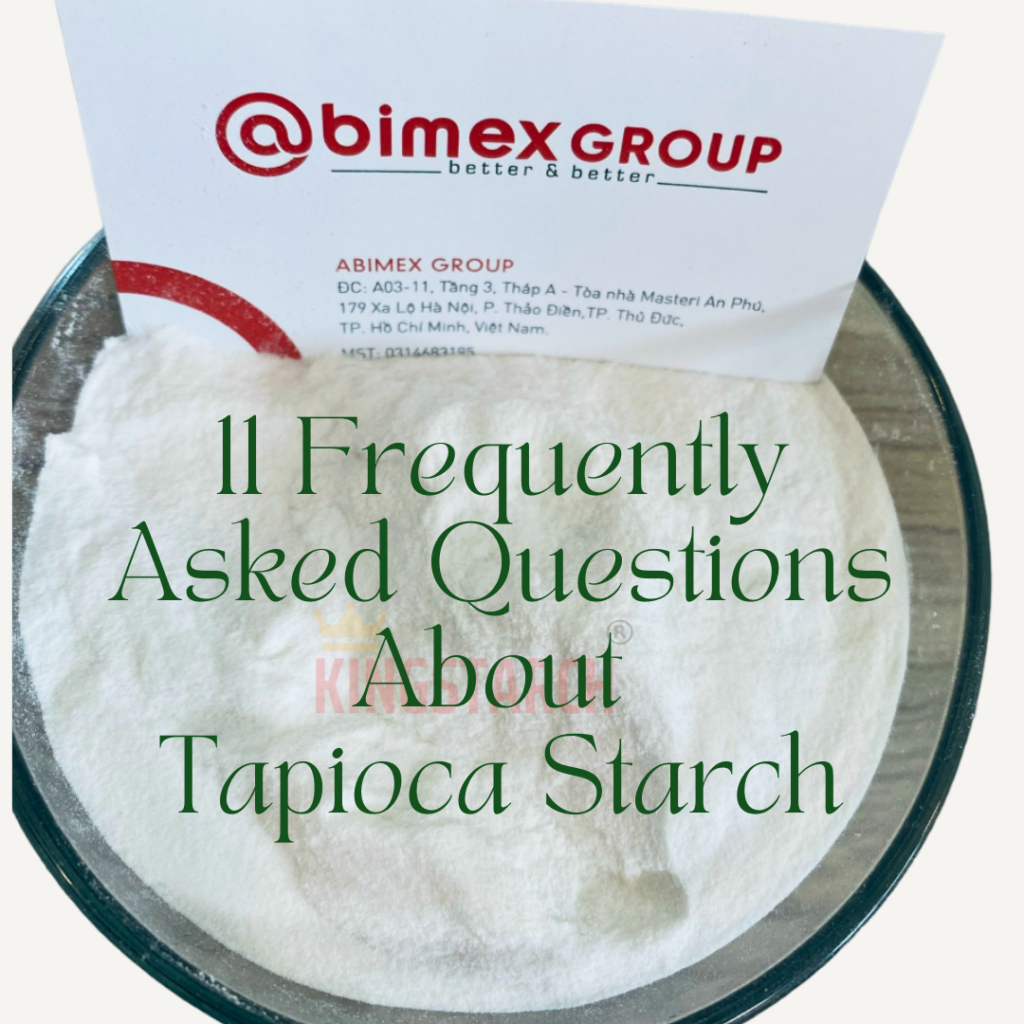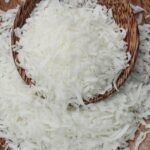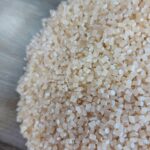CASHEW NUT SHELL OIL
Tapioca starch, also known as tapioca flour, has become a staple ingredient in many kitchens and industries around the world. Derived from the cassava root, this versatile starch is popular for its thickening properties, gluten-free nature, and numerous applications. In this article, we answer some of the most frequently asked questions about tapioca starch, providing insights into its uses, benefits, and more. Whether you are a home cook or a food manufacturer, this guide is designed to deepen your understanding of this incredible ingredient.

Table of Contents
Toggle1. What Is Tapioca Starch?
Tapioca starch is a fine, white powder extracted from the cassava root, a tuber native to South America but now widely cultivated in tropical regions. It is rich in carbohydrates and serves as a key ingredient in cooking, baking, and various industrial applications. Unlike other flours, tapioca starch is entirely gluten-free, making it an ideal choice for those with celiac disease or gluten sensitivity.
2. How Is Tapioca Starch Made?
The production of tapioca starch involves washing and peeling cassava roots before crushing them into a pulp. The pulp is then rinsed multiple times to extract the starch, which is then dried and ground into a powder. The result is a light, neutral-flavored starch that is suitable for both culinary and non-culinary purposes.
3. What Are the Main Uses of Tapioca Starch?
Tapioca starch is a versatile ingredient with a wide range of applications. It is commonly used as a thickener in soups, sauces, and gravies due to its ability to create a smooth, glossy finish. Additionally, it is popular in gluten-free baking as it helps improve the texture of bread, cakes, and cookies. Industrially, tapioca starch is used in the production of biodegradable products like tapioca-based cat litter, adhesives, and textiles.
4. How Is Tapioca Starch Different from Tapioca Flour?
Tapioca starch and tapioca flour are often used interchangeably, as both come from the same source: cassava root. However, some regions make a distinction, with “tapioca flour” sometimes referring to a coarser grind. Generally, for most recipes and applications, you can use tapioca starch and tapioca flour as substitutes without significant differences in outcome.
5. Is Tapioca Starch Gluten-Free?
Yes, tapioca starch is naturally gluten-free. It is a great alternative for those looking to avoid wheat-based flours. Its smooth texture and neutral taste make it an ideal ingredient for gluten-free baking, providing a structure that mimics gluten’s elasticity and helps prevent crumbly textures in baked goods.
6. Can Tapioca Starch Be Used as a Cornstarch Substitute?
Tapioca starch can be used as a substitute for cornstarch in many recipes. It has similar thickening properties, although it may require slightly different proportions. As a general rule, you can use 2 tablespoons of tapioca starch for every tablespoon of cornstarch. Tapioca starch is also more stable when frozen, making it a preferred choice for recipes like pie fillings that need to be frozen and thawed.
7. What Are the Health Benefits of Tapioca Starch?
While tapioca starch is mainly known for its carbohydrate content, it also contains small amounts of minerals like calcium, iron, and potassium. It is low in sodium and free from saturated fats, making it a good option for those looking to maintain a balanced diet. Additionally, it is easy to digest, making it a common ingredient in baby food and products for people with digestive issues.
8. Is Tapioca Starch Keto-Friendly?
Tapioca starch is not considered keto-friendly, as it is high in carbohydrates and lacks the fats required for a ketogenic diet. However, it can be part of a low-FODMAP diet for those with digestive sensitivities, as it is free from complex carbohydrates that can cause digestive distress.
9. How Should Tapioca Starch Be Stored?
To ensure the longevity of tapioca starch, store it in a cool, dry place in an airtight container. When properly stored, it can last for up to 12 months without losing its quality. Keeping it away from moisture is key, as tapioca starch tends to clump when exposed to humidity.
10. What Are the Environmental Benefits of Using Tapioca Starch?
Tapioca starch is gaining popularity as an eco-friendly alternative in various industries. Its biodegradable nature makes it an excellent choice for products like compostable packaging and plant-based plastics. The cultivation of cassava also has a lower environmental footprint compared to crops like corn, as it requires less water and pesticides, making it a sustainable choice.
11. Can Tapioca Starch Cause Allergies?
Tapioca starch is generally well-tolerated by most people, including those with gluten or grain allergies. However, as with any food product, there is a small risk of an allergic reaction. If you experience symptoms like itching, swelling, or difficulty breathing after consuming tapioca starch, seek medical advice immediately.
Conclusion: Why Tapioca Starch is a Must-Have Ingredient
Tapioca starch is a versatile, gluten-free ingredient that offers numerous benefits across culinary and industrial uses. Its role as a thickener, texture enhancer, and eco-friendly alternative makes it an invaluable product for both home cooks and manufacturers. Whether you’re looking to improve your gluten-free baking or explore sustainable product development, tapioca starch is a dependable choice.
By understanding the basics of tapioca starch and how it can be used, you can take full advantage of its benefits in your cooking, baking, or business endeavors. With these FAQs, we hope you have gained a deeper appreciation for this remarkable ingredient!












